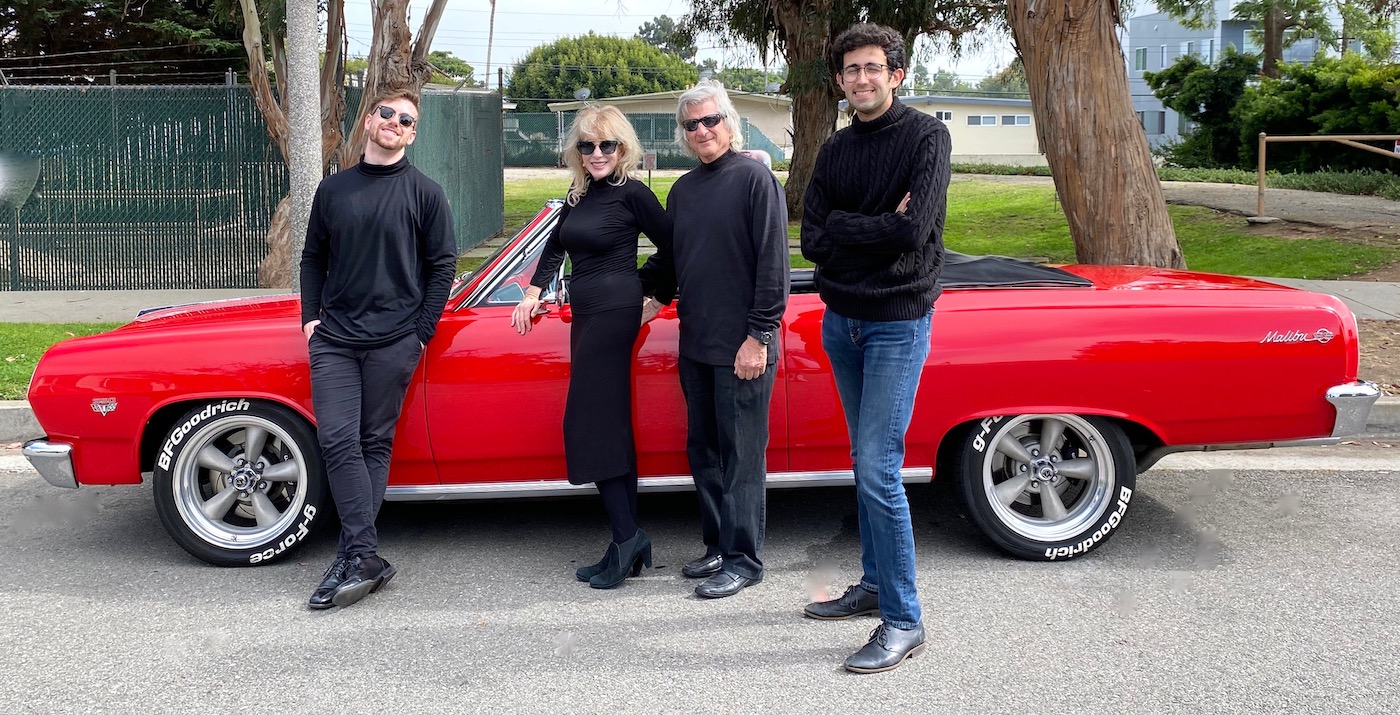Crossing Over

If you’ve attended any of the hundreds of concerts performed by the Los Angeles Philharmonic in the last 36 years, there’s a strong chance you would have glimpsed the orchestra’s longest standing member. His name is Jack Cousin and he has been a pillar of the orchestra’s nine-strong bass section since 1974, when he joined the L.A. Phil as a fledgling 21-year-old. Of course right now it’s not possible to see Jack Cousin or his fellow bassists or any of the violinists, trumpeters, cellists, and the 100-odd musicians who count as members of the Los Angeles Philharmonic. Earlier this year, the orchestra cancelled all live concerts until at least the end of 2020. So the best way to see Jack Cousin play his double bass, at least in person, is likely within the confines of your own home.
Unable to perform in front of live audiences, Jack Cousin has, according to his wife Andrea Comsky, “gone back to his roots”: playing jazz. A little more than a year ago, Comsky had the idea of putting together a quartet that would play jazz standards from the 1950s and ‘60s. “When you go to a jazz club now, it’s always modern,” says Comsky. “But if you want to hear the classics, it’s hard to get it.” Thus was born Mid-Century Jazz. The original intent was to perform jazz clubs, but with the closure of music venues, Mid-Century brings the jazz club to your home, where they perform two-set gigs on a reservation basis.
Comsky speaks in a timbre that is round, gentle and reassuring, qualities she employs amply as the band’s vocalist, chief spokesperson and booking agent. Her diverse musical career has carried her to the opera and to classical repertoires with symphony and chamber orchestras, theater productions, and classic jazz standards. She’s even played weddings and birthday parties. The seasoned résumé of Cousin and Comsky is matched by the spritely talents of the group’s other members: Alex Mansour, a pianist, composer and Los Angeles fixture of jazz clubs, the concert stage, and motion picture studios; and Jonathan Schlitt, a percussionist and regular performer with local symphony orchestras and jazz ensembles.
“We have an intergenerational group here,” says Comsky. “When you come together to play these classics, the age difference disappears. The music is ageless.”
Comsky explains that each member of Mid-Century Jazz is a “crossover musician,” which today is a euphemism not just for knowing how to perform multiple styles, but also knowing how to pivot a music career encumbered by the closure of concert halls. “Normally, we live off people coming into a large venue and sitting shoulder to shoulder,” she says.
In fact, crossing over lies at the heart of Mid-Century Jazz. A typical set may consist of pure jazz classics from Duke Ellington or Ella Fitzgerald but they won’t shy away from less obvious examples from Bobby Darin, Paul McCartney,and André Previn, a master of the crossover whom Comsky describes as a “triple threat.”
“It’s a wonderful cross-section of composers from that era,” she says.
On a recent evening, Mid-Century Jazz found itself crossing over to the Westside of Los Angeles. In front of a private audience seated in a spacious living room that spilled into a spacious dining room, they opened with “Sweet Georgia Brown.” They played a number of gigs throughout October and will be performing in Montecito homes throughout the holiday season.
“Los Angeles musicians come up to Montecito all the time,” says Comsky. “I’m so comfortable there, it feels like a second home.”
(To book a gig with Mid-Century Jazz, contact Andrea Comsky at andrea
comsky@icloud.com. For more info visit mid-centuryjazz.com.)






